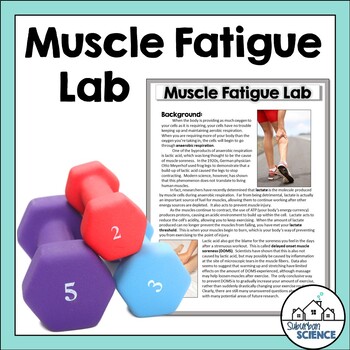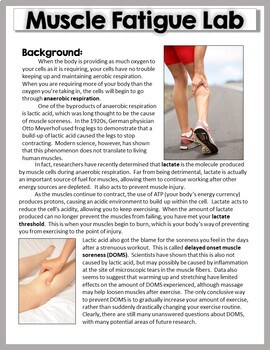Muscular System Activities - Muscle Fatigue Lab Activity
- PDF
What educators are saying
Also included in
- Looking for anatomy resources to fit the laboratory portion of a high school Biology or Human Anatomy course? This Anatomy and Physiology bundle contains 34 thorough and engaging activities for hands-on learning! The labs and activities included in this bundle are designed to be easy to use and alPrice $85.00Original Price $117.00Save $32.00
Description
This quick NO-PREP lab activity is the perfect addition to your muscular system unit! Students learn about the molecules involved in muscle fatigue, then demonstrate the process by purposely fatiguing various muscle groups. This is a favorite lab in any high school Biology or Anatomy classroom!
Teacher instructions and student pages are provided.
PLEASE NOTE: This resource is part of my Muscular System Unit and my Human Body Systems MEGA-Bundle (PowerPoints, Notes, Labs, Diagrams).
Many students come into high school with misinformation on muscle fatigue and the role of lactic acid during exercise. The background information in this lab is based on the most recent data regarding muscle fatigue and the molecules involved.
Topics include: aerobic respiration, anaerobic respiration, lactic acid, lactate, lactate threshold, ATP, delayed onset muscle soreness (DOMS)
Included in this resource:
-1 teacher instruction page
-1 student page with background information on muscle fatigue (print & digital versions included)
-1 lab page for recording data and drawing conclusions (print & digital versions included)
-Answer key
For close-up images of the pages included in this bundle, please click on the "PREVIEW" button.
This activity addresses NGSS HS-LS1-2.
________________________________________________________________________
⭐For updates about sales and new products, please follow my store: My TpT Store
You can also
⭐Subscribe to my newsletter for freebies and teaching tips
⭐Follow me on Instagram
⭐Check out my Facebook page
⭐Follow me on Pinterest
I value your feedback. Please rate this product. If you have any issues or questions about this product, please feel free to ask a question in my store or write to me at support@suburbanscience.com.






